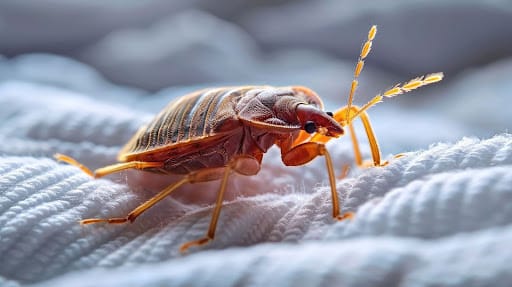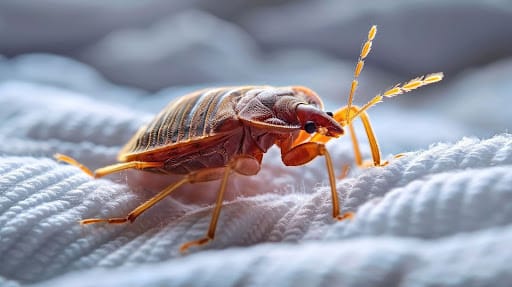
Aftercare Tips: What to Do After a Bed Bug Extermination Service
Dealing with a bed bug problem is stressful. Once your professional bed bug treatment is complete, it’s tempting to think the hard part is over. But in reality, aftercare plays a critical role in the long-term success of any bed bug removal process.
If you want to ensure your home stays bed bug-free, follow these comprehensive aftercare tips. With the right steps, the best bed bug treatment results can be maintained, and future infestations can be avoided.

Understanding the Bed Bug Removal Process
Before diving into aftercare, it’s important to understand what happens during a bed bug removal treatment. Most bed bug control services use one or a combination of the following:
- Heat treatment – A popular bed bug removal method that kills all life stages by raising room temperatures to lethal levels, making it one of the best bed bug treatment options.
- Chemical applications – Professional bed bug treatment using targeted insecticides to eliminate bed bugs hiding in cracks, crevices, and furniture.
- Steam treatment – A chemical-free, eco-friendly solution often used in bed bug control services to safely destroy bed bugs on contact using high-temperature steam.
- Integrated pest management (IPM) – A holistic approach combining inspection, prevention, and multiple bed bug infestation treatment methods for long-term control.
Once the bed bug infestation treatment is done, it’s not time to relax completely—yet. There’s more to do.
1. Wait Before Re-entering the Treated Area
After a professional bed bug treatment, it’s standard practice to wait a few hours before going back into the treated space. Your exterminator will provide a precise time—usually 4–6 hours, depending on the chemicals or methods used.
This ensures:
- The treatment is fully effective
- Your safety from inhaling any lingering fumes
If you had a heat-based bed bug removal, you might be allowed in sooner, but always follow your provider’s instructions.
2. Do Not Immediately Clean or Vacuum Treated Areas
One of the biggest mistakes homeowners make after a bed bug infestation treatment is cleaning too early. It’s critical not to:
- Vacuum treated areas within the first 24–48 hours
- Wash treated surfaces too soon
Why? Because disrupting residual insecticide may reduce its effectiveness. Bed bug control services rely on these residuals to kill bugs that hatch or emerge later.3. Carefully Vacuum After 48 Hours
After the initial wait period, it’s safe to begin vacuuming. Use a vacuum with:
- Strong suction
- A HEPA filter
- Narrow crevice attachments
Vacuuming helps remove any dead bugs, eggs, or shed skins after bed bug removal. Be thorough:
- Vacuum seams of mattresses and box springs
- Along baseboards
- Behind headboards and picture frames
Dispose of vacuum bags in sealed plastic bags immediately to avoid re-infestation.
4. Wash and Dry All Linens on High Heat
Heat is a powerful enemy of bed bugs. After your professional bed bug treatment, it’s time to:
- Wash all bedding, clothing, curtains, and washable fabrics in hot water
- Dry them on the highest heat setting for at least 30 minutes
This step is especially important after any bed bug infestation treatment, because eggs can survive low heat.
Pro tip: Use dissolvable laundry bags to avoid transferring bugs through your home.
5. Don’t Reintroduce Contaminated Items
It’s not uncommon for people to remove belongings before a bed bug removal. However, reintroducing those items can cause another infestation. Before you bring anything back into your home:
- Inspect thoroughly for live bugs or eggs
- Consider applying a preventative spray
- Use sealed containers for storage
Bed bug control services often provide tips on how to safely reintroduce stored items.
6. Encase Mattresses and Box Springs
Investing in high-quality bed bug-proof mattress and box spring encasements is essential. After a bed bug infestation treatment, these covers:
- Trap any remaining bugs
- Prevent new bugs from settling
- Make future inspections easier
This step supports the best bed bug treatment outcome by reducing future hiding spots.
7. Monitor for Activity with Traps
Monitoring is a vital part of bed bug removal aftercare. Use bed bug interceptors or traps under furniture legs to detect any remaining activity. These tools:
- Help determine if treatment was successful
- Alert you early if bed bugs return
- Provide peace of mind
Most bed bug control services recommend monitoring for at least 30–60 days post-treatment.
8. Declutter and Organize
Clutter offers perfect hiding spots for bed bugs. To keep the results of your professional bed bug treatment lasting, follow these steps:
- Discard unnecessary items
- Store clothing and linens in plastic bins with tight lids
- Keep floors and closets clean and accessible
Reducing clutter supports the long-term success of your bed bug infestation treatment.
9. Follow Up With Your Exterminator
Many bed bug control services recommend follow-up inspections 2–3 weeks after treatment. This ensures:
- No surviving bugs or eggs remain
- New activity is detected and treated early
- Additional treatments are scheduled if needed
At DOFFDON Bedbug Exterminator, we’re always here to guide you post-treatment. You can contact us at (469) 499-4495 or donsonbrooks@gmail.com for aftercare support.
10. Prevent Reinfestation
Long-term success after bed bug removal depends on prevention. Take these proactive steps:
- Avoid picking up discarded furniture from the curb
- Inspect hotel rooms while traveling
- Wash travel clothing immediately in hot water
- Vacuum luggage after trips
Combining these with periodic inspections makes the best bed bug treatment truly effective.

Why Aftercare Is as Important as the Treatment Itself
Many homeowners assume that bed bug removal ends when the exterminator leaves. But in reality, your efforts afterward determine whether the treatment lasts or fails. Without proper aftercare:
- Eggs may hatch and cause a resurgence
- Bugs hiding in uncleaned areas may survive
- Improper reentry of items can restart the cycle
DOFFDON’s bed bug control services include guidance and checklists to make sure you’re supported every step of the way.
How DOFFDON Ensures Long-Lasting Bed Bug Removal
At DOFFDON, our mission is not only to provide the best bed bug treatment, but also to equip you with the knowledge and tools for continued success. Our services include:
- Free consultations
- Customized treatment plans
- Detailed aftercare instructions
- Follow-up visits to verify eradication
We don’t just treat—we partner with you to keep your home bed bug-free.
Contact Us for Professional Bed Bug Treatment
If you’re dealing with bed bugs, don’t wait until it becomes a severe infestation. Contact DOFFDON Bedbug Exterminator for trusted, thorough, and safe bed bug removal.
📞 (469) 499-4495
📧 donsonbrooks@gmail.com
We’re here to provide the best bed bug treatment and make sure your home is protected for the long term.
FAQs: Bed Bug Extermination Aftercare
1. Can I sleep in my bed after bed bug treatment?
Yes, but you should wait at least 4–6 hours after treatment, or as directed by your pest control provider. This ensures all chemicals have settled and reduces exposure risks. Sleeping in the treated area also encourages any surviving bed bugs to come out and contact the residual treatment.
2. Do I need to wash all my clothes after bed bug removal?
You should wash and dry all clothes, linens, and fabrics that were in the infested area. Use hot water and high heat drying cycles, as heat above 120°F kills bed bugs and their eggs. Store cleaned items in sealed plastic bags or containers until you’re sure the infestation is gone.
3. How long should I wait before vacuuming after treatment?
Wait a minimum of 48 hours before vacuuming. This allows the residual insecticide to remain active on surfaces where bed bugs hide. After 48 hours, vacuum thoroughly—especially mattress seams, baseboards, and cracks—and discard the vacuum bag in a sealed plastic bag outdoors.
4. Can bed bugs come back after professional treatment?
Yes, bed bugs can return if aftercare instructions are not followed, or if infested items are reintroduced. Regular monitoring, mattress encasements, and follow-up inspections help prevent reinfestation and ensure the effectiveness of the initial treatment.
5. Do I need more than one treatment for a full removal?
In many cases, especially with severe infestations, more than one treatment is required. Follow-up visits are often necessary to catch any bed bugs that hatch from eggs after the initial treatment, as no method kills all eggs on contact.